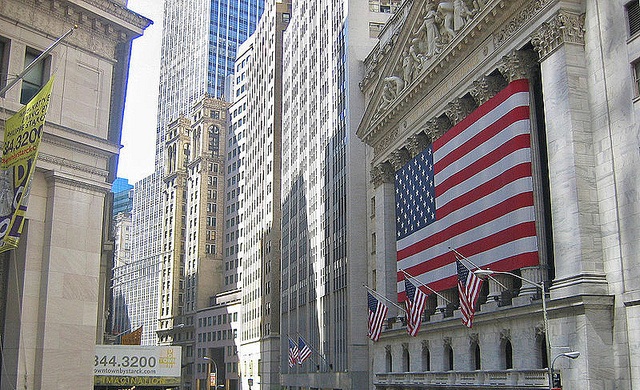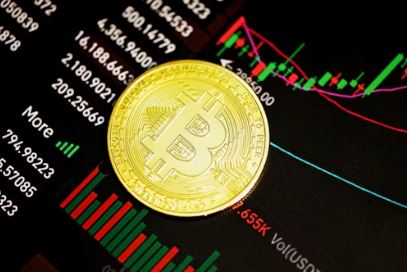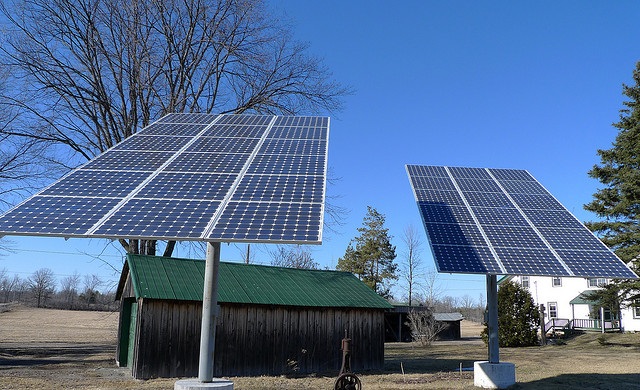I’ve bought put options priced at 180, expiring on the third Friday in December. Perhaps I need to unwrap that a little.

Let’s start with what a put option is: a right, but not an obligation, to sell the underlying at a fixed price at some point in the future or over a period of time.
So let’s apply that to the Dow. The Dow Jones Industrial Average, the underlying, stands at 21,300 today. A put option gives me the right to sell the Dow at a set price in December.
A slight complication: instead of the straightforward Dow the number is divided by 100 for the option contract.
Thus if the real Dow is at 21,300 the option that is “at the money” is expressed as 213 (an at the money option has an exercise price the same as the current market price) .
Each of those points is worth $100.
I’ll illustrate with the put that I purchased yesterday: I bought the right but not the obligation to sell at 180.
If I was to go ahead and exercise my right I would fork out 180 x $100 = $18,000.
But, with index options I do not have to buy the underlying because these are what is called “cash settled”.
That is, only the difference between 180 and the value at expiry is paid over in cash (I don’t sell 30 different company shares).
Obviously, I would not want to exercise the right to sell at 180 when the market is at 213. This means that the option does not have intrinsic value (it is “out of the money”).
If I had bought a 220 put option instead I would have the right to sell at 220 x $100 = $22,000 and I could buy that index at 213 x $100 = £21,300.
This put option has intrinsic value of 7 points or $700 (it is “in the money”).
But such an option costs a lot more than the heavily out of the money one I did buy. I paid 1.30 points for the right to sell at 180.
Those 180 points are worth 180 x $100 = $18,000, whereas my option cost 1.3 x $100 = $130. This is only 0.7% of the underlying.
I have between now and the third Friday in December for my option to gain some intrinsic value. It will not do so if the Dow stays above 18,000.
So if the underlying fell to 170 (that is 17,000 on the real Dow) I would have the right to sell at 180 while being able to “buy” at 170. The market organiser (CBOE in Chicago) will cash settle with me for 10 points per contract, each point worth $100, thus sending me $1,000 in December.
Thus I have a highly geared position on the Dow. For a large range of Dow values in December I receive nothing, but when (or, rather, IF) the Dow falls below 18,000 I start to gain quite high percentages. If the Dow falls all the way to 14,000, off about one-third, then the amount I receive is thirty times the amount I put down as a premium – see table.
|
Real Dow in December |
Dow for the purpose of option pricing | I can sell at | Number of points difference | Value of option |
Percentage change for the 1.3 points x $100 = $130 paid for each option |
|
21,300 |
213 | 180 | negative | Expires worthless – all option premium lost |
-100% |
|
19,000 |
190 | 180 | negative | Expires worthless – all option premium lost |
-100% |
|
18,000 |
180 | 180 | 0 | Expires worthless – all option premium lost |
-100% |
|
17,870 |
178.7 |
180 |
1.3 |
1.3 x $100 = $130 |
zero (paid $130, gained $130) |
|
17,000 |
170 | 180 | 10 | 10 x $100 = $1,000 |
$1,000 – $130 = $870. Which is 669% of the $130 put down |
|
16,000 |
160 | 180 | 20 | 20 x $100 = $2,000 |
$2,000 – $130 = |
………………………………..To read the rest of this article, and more like it, subscribe to my premium newsletter Deep Value Shares – click here http://newsletters.advfn.com/deepvalueshares/subscribe-1

 Hot Features
Hot Features












